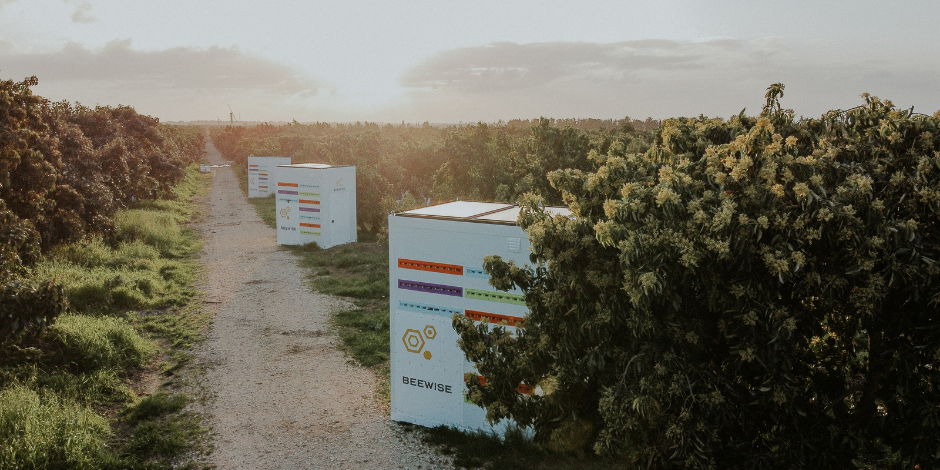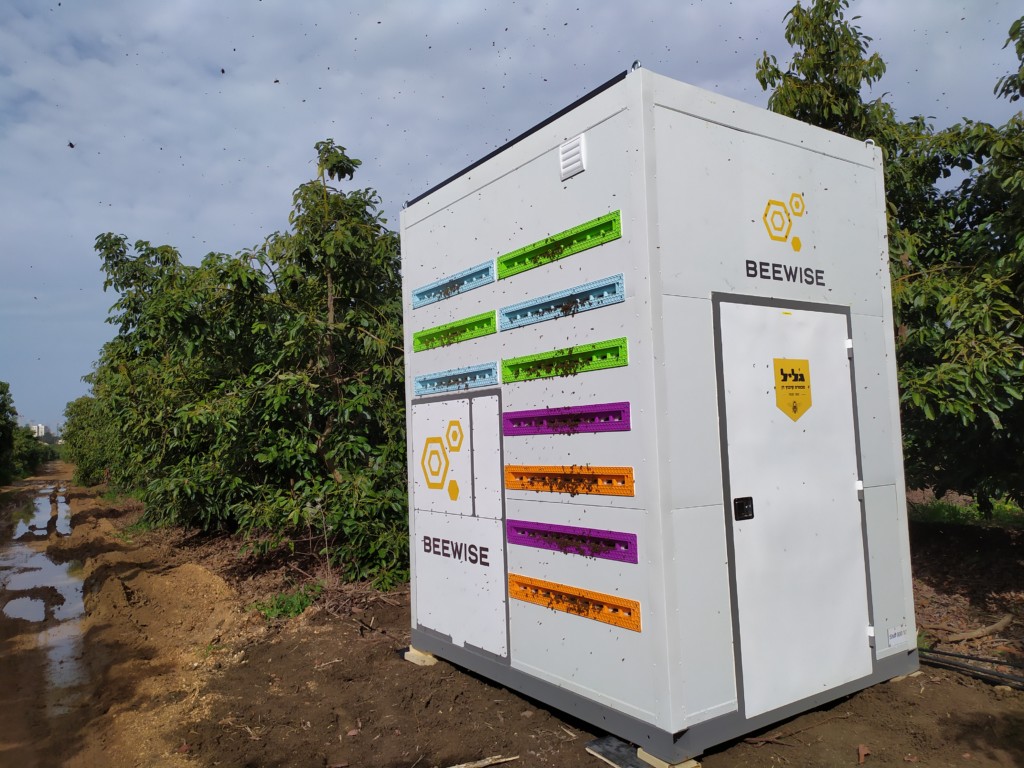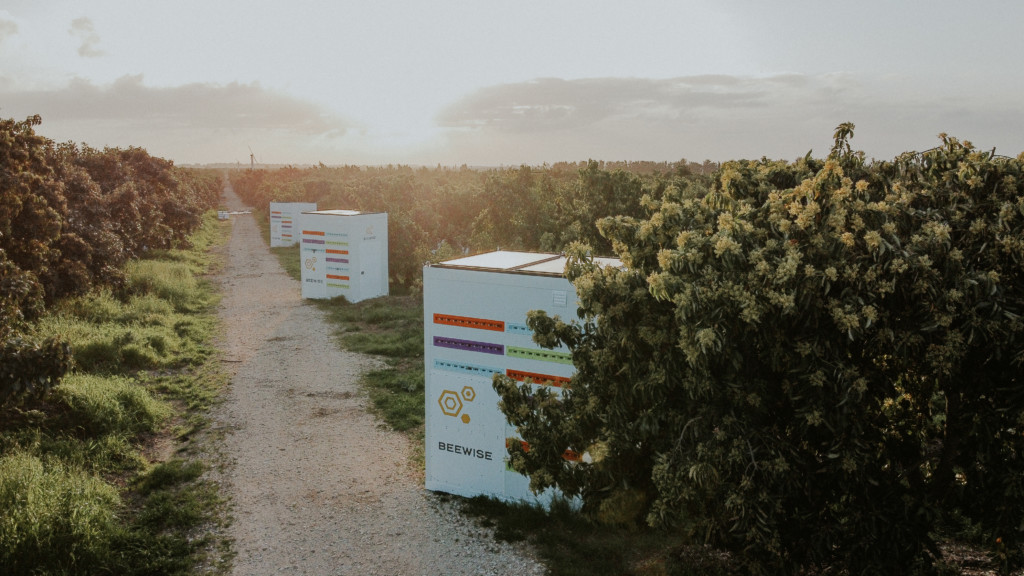Thinking outside the box: World leading autonomous beehive
In our tech-savvy world, it is hard to believe one innovation has stayed almost the same for more than 150 years. That is, until now. In extensive test-bed sites in both the United States and Israel, the beehive has been replaced with a device that is solar powered and driven by artificial intelligence and advanced robotics to monitor every single bee. Only time will tell if these next generation bees will be all they can be.

In the world of honey bees there have been many advances and this latest one, the automation of the bee box, has the potential for generational change as great as the bee box itself. Beekeeping dates to ancient Egypt when early apiarists built their hives from straw and clay. The modern beehive was invented by Massachusetts minister, Lorenzo Langstroth in 1851, using a foundation of methods and designs developed over hundreds of years.
Flash forward
Like many great ideas, the BeeHome device began as a simple conversation between Israeli-based serial entrepreneur, Saar Safra and his friend and veteran commercial beekeeper, Elia Radziner, who is one of five co-founders of this project.

“We go out to the fields, and we see those white wooden boxes, the current beehives, and we tend to romanticise them, and we think they are the natural habitat of the bee, they’re not, they are man-made,” said Saar Safra, CEO of BeeWise.
“These wooden boxes were invented 150 years ago and Langstroth patented these boxes, and they became the norm, the standard and since then if you are a commercial beekeeper and you want to keep bees, you buy these regular beehives even though there are many types of beehives.”
According to Saar, who trained as a software developer, the demand for bee services has outstripped the technological capabilities of the 150-year-old wooden box which is unable to keep up with the modern stresses of climate change, pests, pesticides and or disease.
His solution is a fully solar-powered device, based on computer vision, an AI-based monitoring system, decision making, and predictive analysis.
RELATED: Stock-proof solar design set to optimise agricultural productivity
How does BeeHome work?
The solar powered BeeHome is about two metres in height and two metres wide with robotic machinery positioned outside of the hive. It works like a robotic beekeeper with cameras, sensors and computer vision technology that can adjust the climate inside the hive automatically. The device then sends insights to the beekeeper’s smartphone via an app so they can keep track of honey production and care for the hive’s needs without having to be physically present at the site.
Besides monitoring the hive and the health of the bees to aggregate and evaluate what is going on, it also includes a harvesting system and an automatic system for pest control, feeding and thermal regulation. The robot can apply medicine if there is a disease, feed the bees, provide water and harvest the honey, so it does all the things a beekeeper would do.
RELATED: Human-like robotics to save time and food waste
“We don’t interfere in the biology of the pollination of the bees or the production of their honey. What we do is ensure that back home in the hive the environment is productive to them so they can thrive. We regulate the temperature and the humidity for their benefit, especially with extremes in weather and we help them with disease in the hive and the robot can identify that and apply treatment in real time with no use of chemicals,” said Saar.
“Right now, we have found after rigorous testing in the US, that the BeeHome can contain the magic number of approximately 24 hives which equates to millions of bees, and I assume that would work well in Australia too. If you want more hives in a bee yard for honey production, you can put two devices next to each other so that it can be easily scaled if need be.”
The march of a global mite
While Australia remains the only continent free of the varroa mite, globally the tiny parasite has crippled honey bees everywhere it has taken hold, particularly in Europe and North America.

Saar and his technologists have devised an incubator where the brood (bee larva) frames are heated which destroys the mite without hurting the brood.
“This is technology that is already in existence, we have not invented, it is out there except it is really hard to do at scale with regular hives. You’re not going to carry a small oven into the field and then heat every frame for two hours,” said Saar.
“We can do it inside our device because it is a robotic arm that takes the frame, puts it in the incubator and after two hours, takes it out and that frame is free of varroa, and the brood is fine making it an effective, scaleable way of getting rid of varroa without using any chemicals.”
Is the device suited to Australian conditions?
For the past three years Saar and his team have been trialling their device using test beds in California and Israel and they’re currently at iteration number 18. BeeWise is a small “tech startup” that Saar says is commercially active in North America with each device costing $US400 per month. He says they are constantly adding features to their design to “improve the health of the colony, adding capabilities to our device to promote the colonies size and strength.”
Remaining focused is imperative to our success and stretching too thin is a risk to the business,” he admits.
“I am pretty amazed and surprisingly delighted by the Australian market,” said Saar.
“We have a lot of demand for our device and people are taking the initiative to talk with us about it and while we are currently focused on the North American market, Australia and New Zealand is next.”
RELATED: Supercharging innovation: A new approach to old ways in New Zealand
Saar adds: “So we are starting to learn the Australian market and find the right partners and analyse and understand what are the needs of the Australian market which is different to the North American one; what are the opportunities, where can we help; is their real value in what we can produce and based on that, decide our next step.”
Beekeeping is migratory
Connectivity issues are solved by using satellite technology if the location of the hives is remote, keeping in mind beekeeping is a migratory business, explains Saar.
Australian conditions are similar to those experienced in California and during extreme weather events such as bushfires, commercial beekeepers will receive a text if a bushfire is close.
“We have temperature sensors outside of the device that sense subtle changes in temperature. If we see temperatures going up beyond what is considered normal for that area and time of the year, we notify the beekeeper,” said Saar.
“The nice thing about it is that our device is easily moveable, so you can move 24 hives in a matter of minutes. If there are bushfires, you can come with your truck and get them out of the field relatively quickly.”
RELATED: Innovative location technology improving farm safety and efficiency
Theft is also another issue. “I don’t know if it is as common in Australia but there are a lot of issues when you deal with small wooden boxes and because our device is bigger, more bees can be moved and relocated at once.”
The device can also be tracked at any time with beekeepers receiving a text alerting them if the device is being moved without their knowledge and the app will show the hive’s new location.
Revolutionising beekeeping
Saar and his team believe their device will revolutionise beekeeping not just in Australia but around the world.
“There has to be a new standard for a beehive, and we’d like it to be our device but whether it will or not it is, regardless, I truly believe the current technology of the wooden boxes will disappear over the next few years,” said Saar.
“More and more people on the planet are consuming pollinated produce such as cucumbers, apples, watermelon and almonds and many other crops, and the current technology just can’t keep pace,” he said.
RELATED: Southeast Asia: Agritech opportunities for Australian startups
He credits the availability and affordability of precision robotics in building a robot that can take care of bees which is also cost-effective for commercial beekeepers so that “we can all make a profit but the ones that really profit from of this are the bees.”
“I am always cautious about making predictions, but the current wooden boxes are not keeping up so let’s focus our technology on the bees and keeping the bees alive which is important for our health and the health of our planet.”
For more information go to BeeWise.ag. Find more information about Australian research into honey bees and pollination at agrifutures.com.au/honey-bee-pollination.
